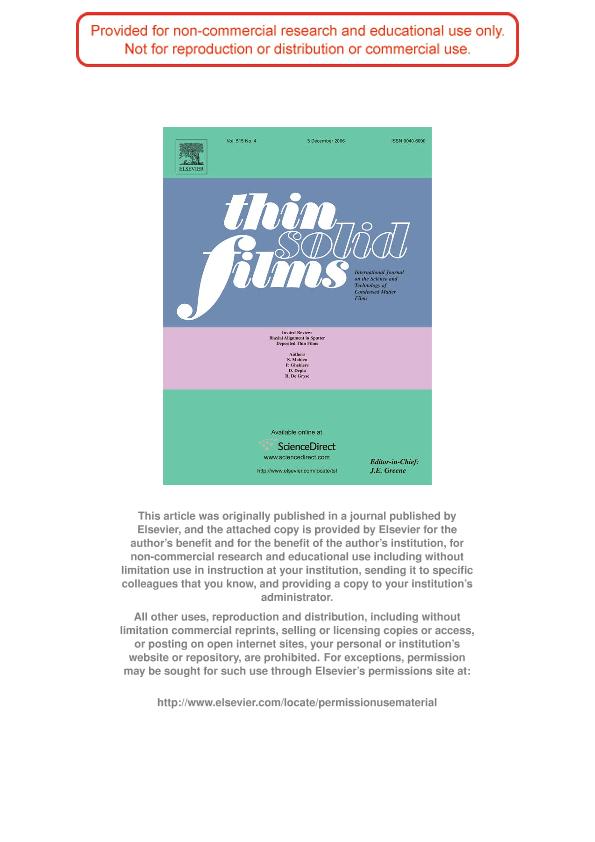Mostrar el registro sencillo del ítem
dc.contributor.author
Burmeister, F
dc.contributor.author
Comedi, David Mario

dc.contributor.author
Chambouleyron, I.
dc.date.available
2019-10-11T13:42:27Z
dc.date.issued
2006-12
dc.identifier.citation
Burmeister, F; Comedi, David Mario; Chambouleyron, I.; Bismuth doping of hydrogenated amorphous germanium thin films; Elsevier Science Sa; Thin Solid Films; 515; 4; 12-2006; 2442-2446
dc.identifier.issn
0040-6090
dc.identifier.uri
http://hdl.handle.net/11336/85674
dc.description.abstract
The optoelectronic properties of Bi-doped hydrogenated amorphous germanium (a-Ge:H), with relative impurity concentrations [Nimp/NGe] ranging between 8 × 10− 6 and 5.5 × 10− 3, are reported. The incorporation of Bi produces small changes in the dark conductivity of a-Ge:H. For a three orders of magnitude change in impurity concentration the room-temperature conductivity changes by just one order of magnitude. Within this doping range no, or small, changes were measured in the values of the pseudo-gap, the Urbach energy, and the hydrogen content. The Fermi level always remains far from the conduction band edge, shifting by only 0.1 eV for the sample with the largest doping concentration. The main conclusion is that Bi is a very inefficient active donor in a-Ge:H. The likely reasons for such behavior are discussed.
dc.format
application/pdf
dc.language.iso
eng
dc.publisher
Elsevier Science Sa

dc.rights
info:eu-repo/semantics/openAccess
dc.rights.uri
https://creativecommons.org/licenses/by-nc-sa/2.5/ar/
dc.subject
Doping
dc.subject
Amorphous germanium
dc.subject
Bismuth
dc.subject
Fermi level
dc.subject.classification
Física de los Materiales Condensados

dc.subject.classification
Ciencias Físicas

dc.subject.classification
CIENCIAS NATURALES Y EXACTAS

dc.title
Bismuth doping of hydrogenated amorphous germanium thin films
dc.type
info:eu-repo/semantics/article
dc.type
info:ar-repo/semantics/artículo
dc.type
info:eu-repo/semantics/publishedVersion
dc.date.updated
2019-09-30T20:45:28Z
dc.journal.volume
515
dc.journal.number
4
dc.journal.pagination
2442-2446
dc.journal.pais
Países Bajos

dc.journal.ciudad
Holanda
dc.description.fil
Fil: Burmeister, F. Uppsala University; Suecia. Universidade Estadual de Campinas; Brasil
dc.description.fil
Fil: Comedi, David Mario. Universidad Nacional de Tucumán. Facultad de Ciencias Exactas y Tecnología. Departamento de Física. Laboratorio de Física del Sólido; Argentina. Consejo Nacional de Investigaciones Científicas y Técnicas. Centro Científico Tecnológico Conicet - Tucumán; Argentina
dc.description.fil
Fil: Chambouleyron, I.. Universidade Estadual de Campinas; Brasil
dc.journal.title
Thin Solid Films

dc.relation.alternativeid
info:eu-repo/semantics/altIdentifier/doi/https://dx.doi.org/10.1016/j.tsf.2006.06.021
dc.relation.alternativeid
info:eu-repo/semantics/altIdentifier/url/https://www.sciencedirect.com/science/article/pii/S0040609006007772?via%3Dihub
Archivos asociados
